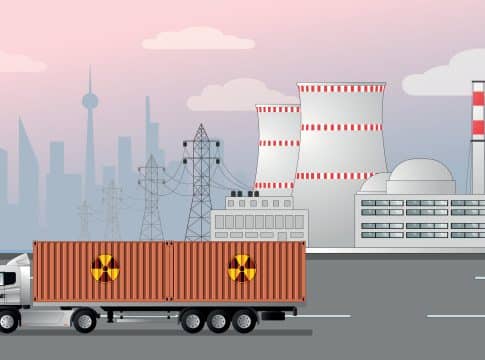Fortescue’s “Real Zero” Ambition Could Yield Up To $150M in Carbon Credits by 2030
Fortescue Metals Group is forging ahead with its bold plan to achieve “real zero” emissions by 2030, a move that could generate substantial financial rewards under the Australian government’s new carbon credit scheme. This initiative, known as Safeguard Mechanism Credits (SMCs), is part of the Albanese government’s broader strategy to incentivize businesses to cut emissions and meet the country’s climate targets.
If Fortescue succeeds in meeting its ambitious emissions goals, it could earn between $50 million and $150 million annually from selling the carbon credits.
Fortescue’s Bold “Real Zero” Ambition
Chairman Andrew Forrest has made it clear that Fortescue’s ultimate goal is to achieve “real zero” by eliminating all Scope 1 and Scope 2 emissions from its iron ore mining operations by 2030. This is distinct from “net zero,” where companies can rely on carbon offsets to balance out hard-to-abate or unavoidable emissions.
Forrest is a long-time critic of carbon offsets and suggests they do little to drive actual reductions in emissions. Instead, Fortescue’s focus is on achieving genuine emissions reductions through the transformation of its operations.
The mining giant’s commitment to decarbonization includes an extensive plan to overhaul its energy sources, transitioning from fossil fuels to renewable energy to power its operations. Fortescue estimated in 2022 that achieving “real zero” in its Pilbara mining district would require an investment of $US6+ billion.
The company’s strategy also involves the electrification of its mining fleet, investments in green hydrogen, and innovative technology solutions to reduce its carbon footprint.
Despite Forrest’s aversion to carbon offsets, Fortescue’s progress toward “real zero” could lead to the company becoming a major beneficiary of the Safeguard Mechanism Credits program.
RELEVANT: ASX Debuts Environmental Futures Contracts for Carbon Markets
The Clean Energy Regulator will allow companies to earn carbon credits if they exceed their mandated emissions reduction targets. For Fortescue, this could mean generating around 1.4 million SMCs by 2030. This is because its projected emissions could be significantly lower than the regulatory allowance for its iron ore production.
What is The Safeguard Mechanism Credits Scheme?
The Safeguard Mechanism, set to begin in 2024, is a key component of the Albanese government’s strategy to reduce national greenhouse gas emissions. The program rewards companies that cut their emissions beyond the required levels by granting them SMCs. These credits can then be sold to other companies that fail to meet their emissions reduction targets, creating a market-based approach to driving climate action.
Analysts project that the value of these credits could be substantial, with a government-imposed ceiling price of $75 per tonne.
If Fortescue succeeds in its decarbonization plans, it could generate tens of millions of dollars by selling SMCs to companies struggling to meet their own emissions reduction targets. According to projections, the miner will be permitted to emit around 1.4 million tonnes of carbon dioxide by 2030.
However, if the company manages to achieve its “real zero” goal, it will have cut all emissions. And thus, it could earn 1.4 million credits in that year alone. Given the price of $75/tonne, that could total about $105 million worth of carbon credits.
While the financial windfall from selling SMCs is attractive, Fortescue hasn’t yet decided whether to participate in this carbon market.
Andrew Forrest said that Fortescue is still finalizing its position on the Safeguard Mechanism, noting that:
“We will do this consistent with our broader approach to voluntary and compliance carbon markets, which is that the core focus must always be the delivery of real reductions in emissions.”
He reiterated that Fortescue’s core focus remains on achieving genuine emissions reductions, not on offsets or carbon capture technologies.
Decarbonization Challenges Amid Rising Emissions
Fortescue’s path to achieving “real zero” is fraught with challenges. While the company is making strides in decarbonizing its operations, it still has a long way to go.
In the year to June 2024, Fortescue’s Scope 1 and Scope 2 emissions—the direct emissions from its mining activities and those associated with its energy use—rose by about 7%. This increase in emissions led to the company exceeding its government-mandated emissions cap by about 120,000 tonnes. Therefore, the iron miner was forced to purchase $4.2 million worth of Australian Carbon Credit Units (ACCUs) to comply with the law.
Visual from Fortescue Climate Transition Plan report
Despite the setbacks, Fortescue has reaffirmed its commitment to decarbonization and has emphasized that it will only purchase carbon offsets when legally required. The company insists that it will not rely on carbon credits to achieve its 2030 target. It will remain focused on reducing emissions at the source.
The company has also pledged not to rely on carbon capture and storage (CCS) technologies, which it views as an insufficient solution for addressing the climate crisis.
Rival Approaches in the Mining Industry
Fortescue’s aggressive push toward “real zero” stands in contrast to some of its competitors in the mining industry. Rival miner Rio Tinto, for instance, has set a target to halve its carbon emissions by 2030, at an estimated cost of $US6 billion.
Rio Tinto has been in major partnerships recently with its lithium expansion. Still, though Rio Tinto’s plans are substantial, they do not match the level of ambition shown by Fortescue, which is aiming for complete decarbonization in the same time frame.
Fortescue Metals Group’s “real zero” target is a landmark initiative that could set a new standard for the mining industry. It can also generate significant financial benefits through Australia’s Safeguard Mechanism Credits program. The company’s commitment to genuine emissions reductions, combined with its potential to earn millions from selling carbon credits, makes Fortescue a key player in the global transition to a low-carbon economy.
READ MORE: Fortescue Launches Innovative Green Metal Project in Australia, Fueled by Green Hydrogen!
The post Fortescue’s “Real Zero” Ambition Could Yield Up To $150M in Carbon Credits by 2030 appeared first on Carbon Credits.



